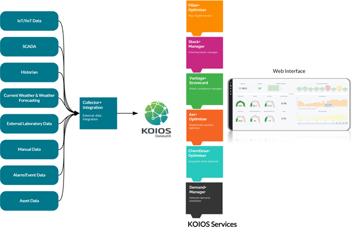Better use of water modelling can help with decision making
Ever wondered how Australia’s regional and urban water modelling is managed? One Australian based water management organisation is helping states, territories and international countries make better use of water modelling to help with decision making.
Not for profit company eWater started as a Cooperative Research Centre (CRC) in 2005, and is now owned by all Australian governments, Federal, State and Territory, except for the Northern Territory who are looking at joining, according to Partnerships and Communications Manager Trudy Green.
“The eWater CRC merged two previous CRCs for freshwater ecology and catchment hydrology. The CRCs got to a point where they had undertaken a lot of catchment and ecological research. Our job at eWater was to put all that information into a water modelling platform that would meet the needs of Australian water managers for decades to come,” Green said.
“In 2012, the eWater CRC ended and we became a government owned company. Our owners had confidence the hydrological model was at a stage of development that allowed for us to move from research to adoption.
“Supporting the ongoing development of the model and its adoption has been eWater’s focus ever since. We have also supported adoption in other parts of the world, helping others to leverage Australia’s collective investment in water modelling software”.
eWater’s primary tools are Source, Australia’s national hydrological modelling platform, and MUSIC, a modelling tool designed to support water sensitive urban design. MUSIC is the acronym for Model for Urban Stormwater Improvement Conceptualisation.
Source is a catchment and river system model that has planning, operations and forecasting modes, with the unique ability to include water sharing arrangements.
“In 2008 a National Hydrolological Modelling Strategy was COAG-endorsed and set the roadmap to develop Source as Australia's national hydrology modelling platform, COAG re-committed to this in 2018 when it renewed the National Hydrological Modelling Strategy,” Green said.
“The intention is to encourage all water modelling to be done on the Source platform to attempt better integration, particularly, in some of Australia’s contentious water management areas, like the Murray-Darling Basin.
“It’s expensive and difficult to manage water modelling across an area like Australia. Five States, five different models, five different answers. The long-term aim is for Source to be used for all water resource modelling in Australia, and we are well on the way to achieving this, with Source used on all mainland states for planning purposes.
Green said eWater is now moving towards more Source models in operational contexts, including for the Murray-Darling Basin Authority.
“The other main tool that we are responsible for is MUSIC, which is used in the urban water quality space. It's been widely adopted by local councils across the country for managing water quality impacts on development,” Green said.
“We recently launched the Urban Developer Tool which also has its foundations in the eWater CRC, which will add Integrated Water Cycle Management (IWCM) capability to both Source and MUSIC.
“Being not for profit, any surplus is reinvested in tool development and 2020 has been quite a big year for us in terms of product enhancement. We have launched upgrades to MUSIC and our new Urban Developer tool that integrates them with the Source platform. Allowing for integration between catchment and river system models with small scale, urban water quality and quantity models.”
The new Urban Developer tool is a result of a long-term collaboration with Melbourne Water, Green said.
“It allows for detailed end-use demand analysis, taking into account factors such as appliance efficiency, dwelling type and local climate. Integration with Source brings the added capability of being able to see how your local demand interacts with your catchment and bulk system models,” she said.
“We’re pretty happy about this new development. We are hoping this will be a catalyst for thinking about how local re-use and integrated water cycle options might be able to offset big water supply systems.”
Internationally, eWater has worked closely with the Department of Foreign Affairs. eWater recently supported the Australian Government to gift the Source tool to the Cambodian government.
“We have quite a long-running connection with South East Asia. With support form the Department of Foreign Affairs and Trade, we’ve worked with the Mekong River Commission, as well as individual lower Mekong nations, especially Cambodia and Laos,” she said.
“The gifting of Source to Cambodia builds on several years of collaboration on water modelling and capacity building. It will play a key role in Australia’s ongoing support for sustainable water management throughout the Mekong region.
“Another exciting project in the Mekong is our partnership with the Mekong River Commission Secretariat, helping in the upgrade of their data collection, analysis and decision support systems. Key to this is bringing together Australia’s range of expertise, including that of the Bureau of Meteorology, Geoscience Australia, and the Murray-Darling Basin Authority.”
Green said part of eWater’s work is to support the eWater software user community, through organising an annual conference to facilitate the sharing of experience and uses of the various modelling platforms.
“Every year we run a conference where we invite our user community to present how they've been utilising their models. It's a great opportunity to showcase their work and drive innovation,” Green said.
“eWater gives high priority to promoting the Australian water modelling community and helping people connect with different types of modellers and build on that shared knowledge.”
To learn more, visit eWater.org.au

